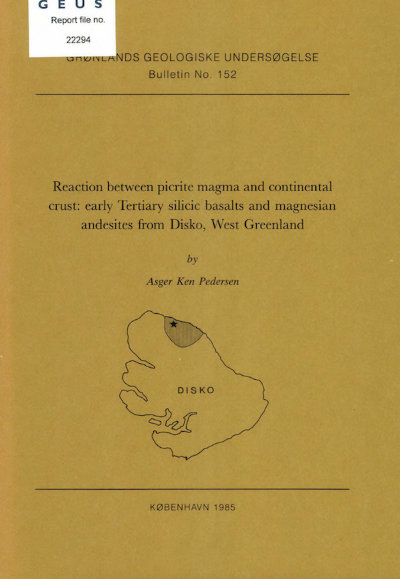Reaction between picrite magma and continental crust: early Tertiary silicic basalts and magnesian andesites from Disko, West Greenland
DOI:
https://doi.org/10.34194/bullggu.v152.6694Abstract
The Kûgánguaq Member is a lava and tuff sequence comprising about 7.S km3 of magnesian silicic basalts (92%), magnesian andesites (7%) and feldspar-phyric silicic basalts (<1%) found in the middle part of the predominantly picritic Vaigat Formation of lower Tertiary age in northern Disko. The Kûgánguaq Member rocks contain high normative orthopyroxene and usually abundant modal low-Ca pyroxene while modal Fe-Ti oxides are very sparse. The rocks show chemical similarities to boninites and to high-Mg continental dolerites. Comparison with regional picritic to olivine-poor tholeiitic basalts from the Vaigat Formation reveals that the Kûgánguaq Member rocks were derived from picritic parents (MgO > 18%) through reaction with crustal rocks, presumably Cretaceous sand or siltstones. The reaction led to sulphide fractionation and to magma modification which cannot be explained in terms of crystal fractionation or by simple mixing between magma and contaminants. The transition element (Fe, Ti, Vand Cr) concentrations in rocks, glasses and minerals indicate that the Kûgánguaq Member rocks equilibrated at oxygen fugacities several orders of magnitude below the FMQ buffer, but above the IW-buffer. The partitioning of vanadium between olivine and glass and between chromite and glass show particularly large variations and appears to be the most sensitive recorder of fo2 variations in the range between the FMQ and IW buffers at high igneous temperatures.
Downloads
Published
Issue
Section
License
This article is distributed under a CC-BY 4.0 licence, permitting free redistribution and reproduction for any purpose, even commercial, provided proper citation of the original work. Author(s) retain copyright over the article contents.


